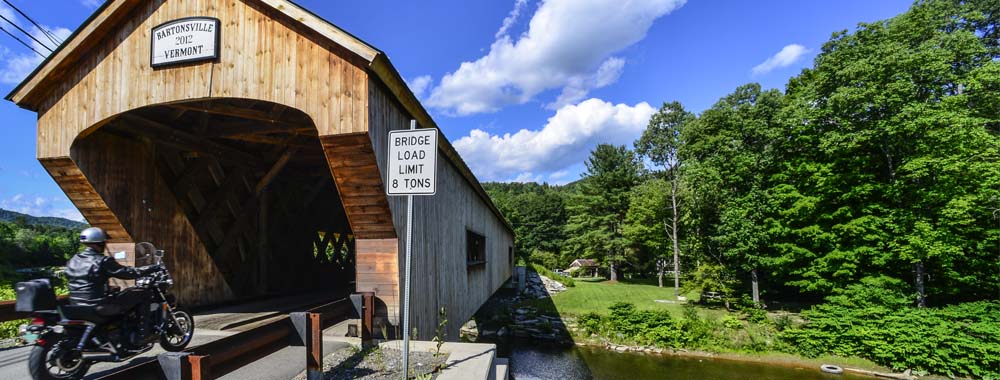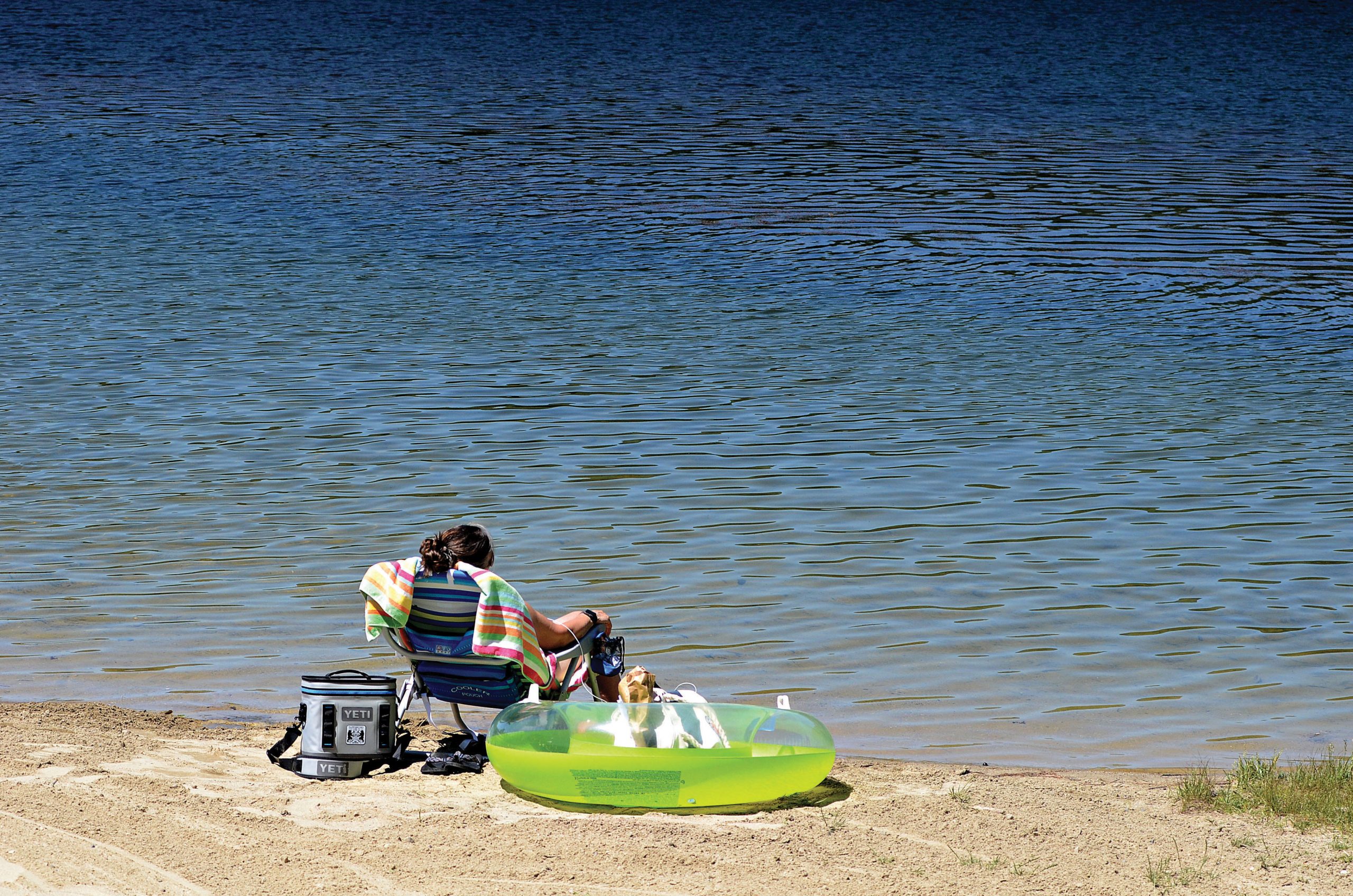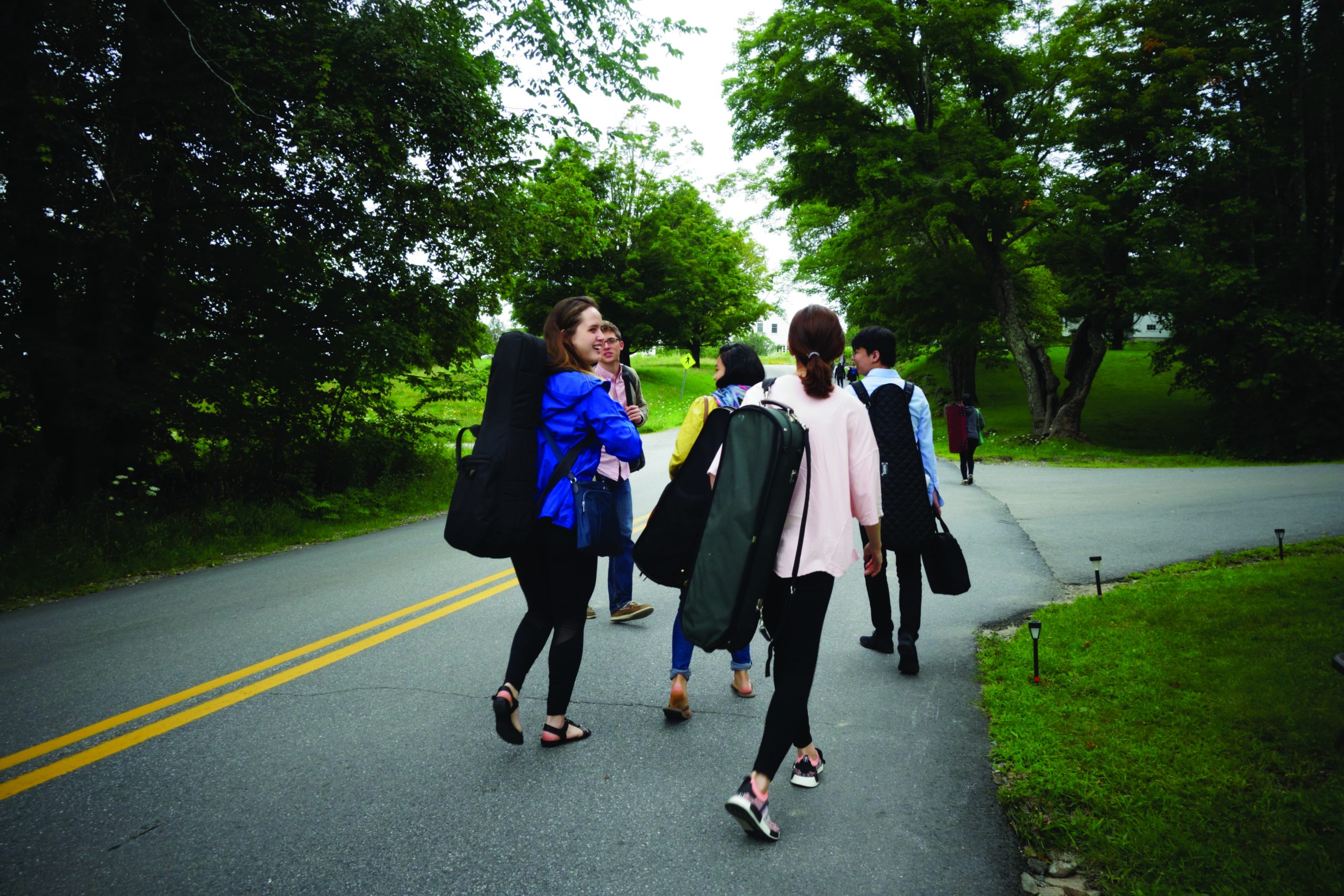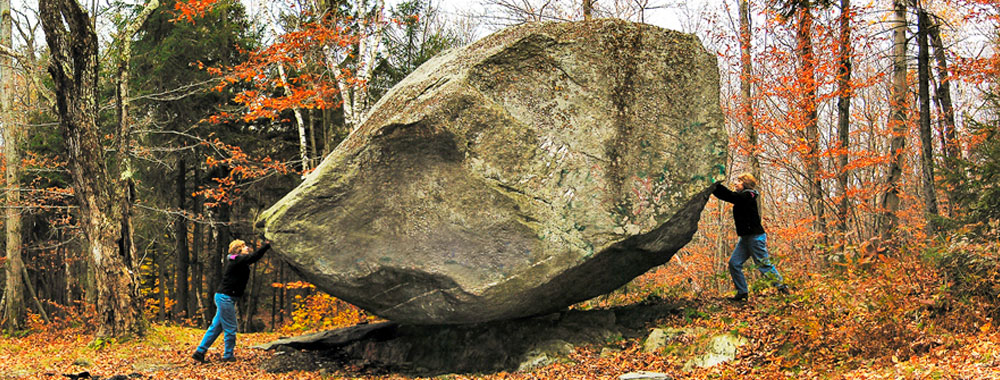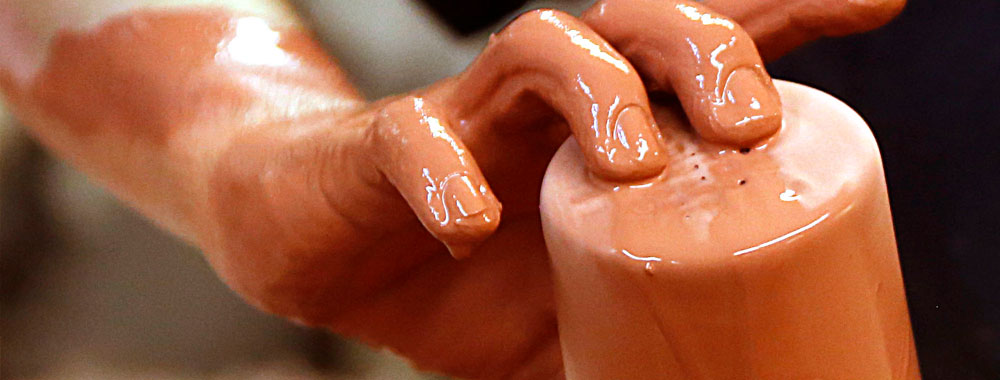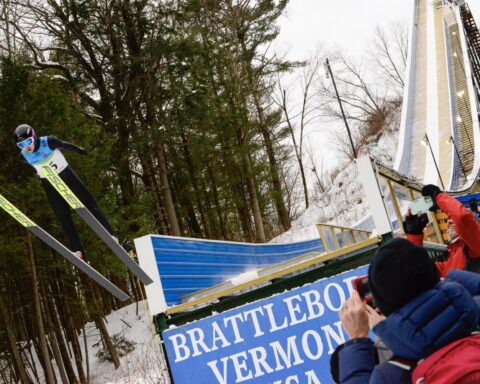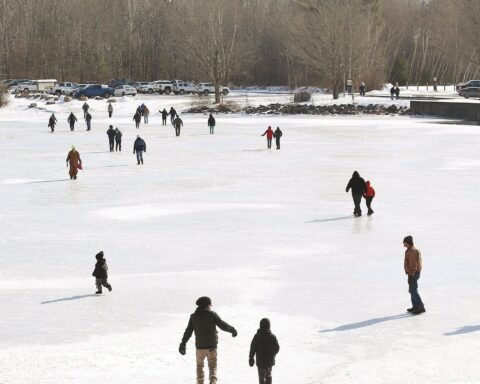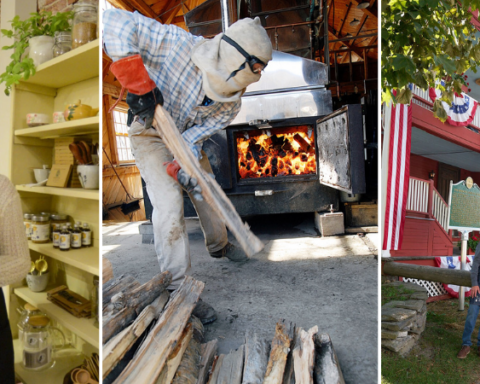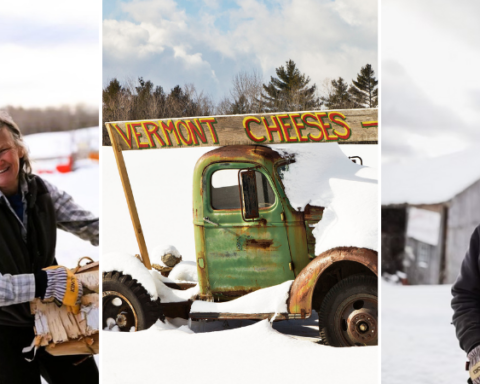By Jennifer Huberdeau
Nothing hearkens back to the 19th-century like a covered bridge. Picturesque, architectural marvels, these wooden bridges evoke the grace and beauty of a simpler time.
Once, the covered bridge was commonplace, but time and weather have taken their toll on the structures. Those that survive, through restoration or replacement, are a wonder to see.
We recommend grabbing a camera and sturdy hiking shoes or sneakers before heading out to see these beauties.
The Berkshires
Upper Sheffield Bridge / Old Covered Bridge
Covered Bridge Lane, Sheffield, Mass.
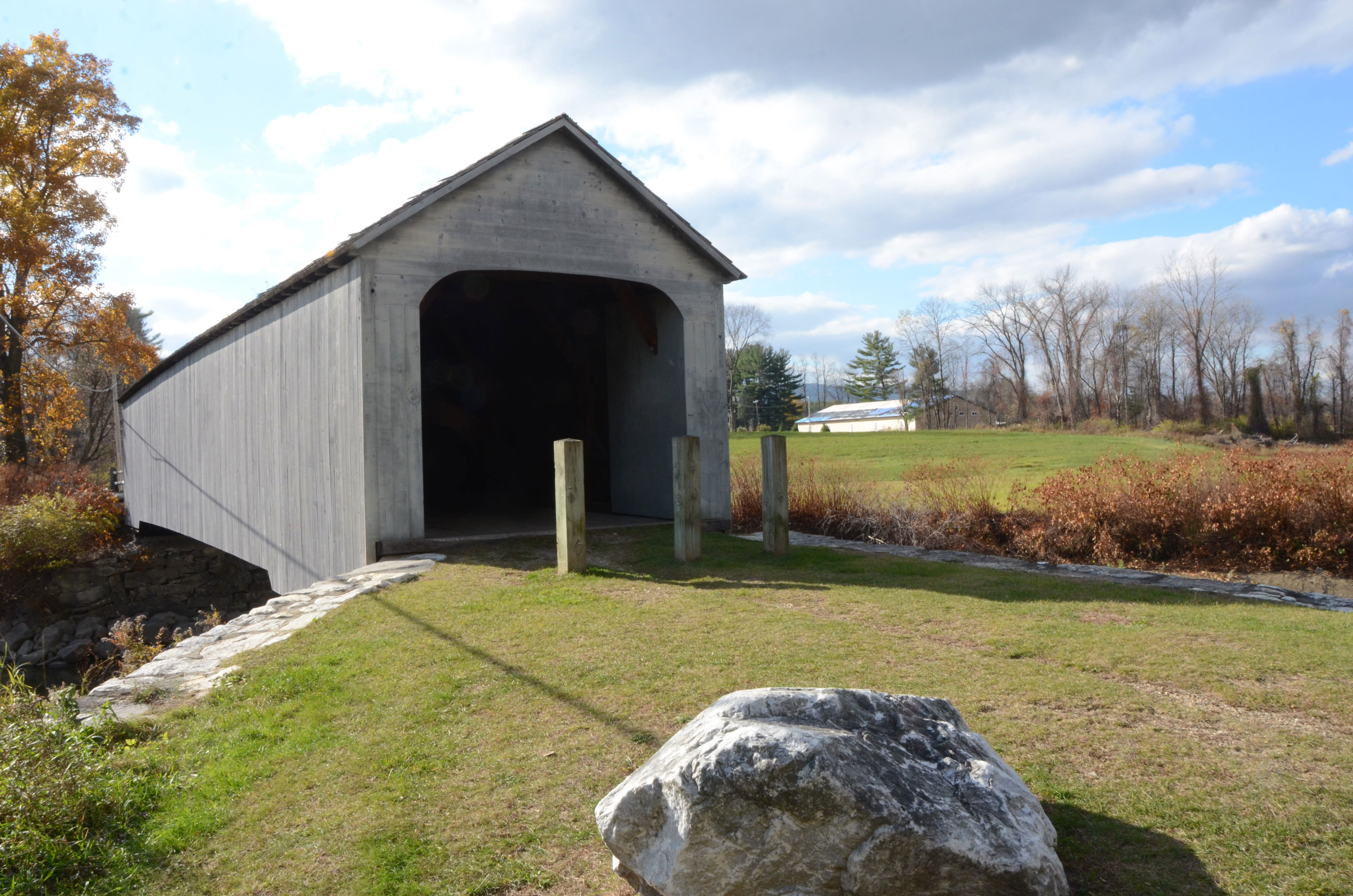
Built in 1837, the Upper Sheffield Bridge or Old Covered Bridge, was once the oldest lattice trust bridge in Massachusetts. The original, which was the state’s oldest wooden covered bridge at the time, was destroyed by a fire in 1994. This replica, completed in 1999, is only open to pedestrian traffic.
The 93-foot-long bridge spans the Housatonic River. There is parking nearby, as well as a boat launch and some hiking trails. The bridge has been listed on the National Register of Historic Places since 1978.
Take US 7, about 0.8 miles north of Sheffield, then east 0.2 miles to the bridge.
Bennington County
Silk Road Covered Bridge
Silk Road, Bennington, Vt.
When touring the bridges of Bennington County, this is the place to start according to the Bennington County Covered Bridges Guide.
Built in 1840 by Benjamin Sears, the 92-foot-long bridge crosses the Walloomsac River. The bridge is open to vehicles.
Find the bridge on Route 67A, across from the entrance to Bennington College.
Paper Mill Village Bridge / Bennington Falls Covered Bridge
Murphy Road, Bennington, Vt.
Located just down the road from the Silk Road Covered Bridge, this bridge takes its name from a long-gone paper mill. Originally built in 1889 by Charles F. Sears, the 125-foot-long bridge spans the Walloomsac River and is open to vehicle traffic. The original bridge was listed on the National Register of Historic Places in 1973. It was rebuilt in 2000.
If already on Route 67A in Bennington near the Silk Road Covered Bridge, travel about a half-mile west. Keep an eye out for its sign.
Henry Bridge / Burt Bridge
Murphy Road, Bennington, Vt.
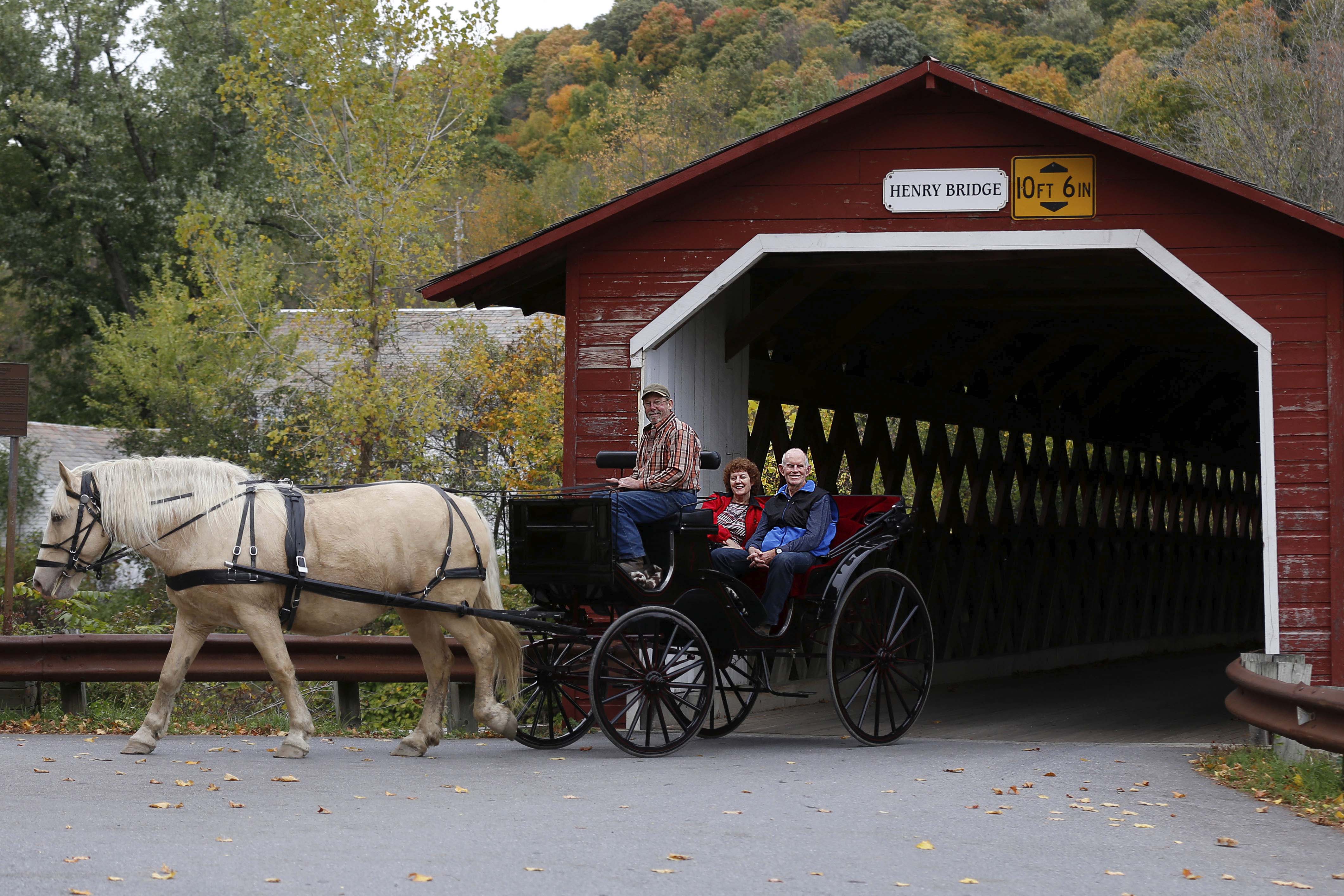
Known as the Henry Bridge or Burt Covered Bridge, the 127-foot-long town lattice-truss bridge was built in 1840. At one time it was considered the strongest bridge in Vermont, as it was built with two sets of trusses to handle the weight of heavy loads of pig iron that were carried over it by several yokes of oxen. The bridge was rebuilt in 1989 with southern pine and ash tree nail, not the traditional spruce and oak.
Located on Murphy Road, the bridge can be found by taking a left off of Route 67A.
Chiselville Covered Bridge
East Arlington Road, East Alrington, Vt.
The inscription over this 117-foot span of covered bridge reads, “One dollar fine for driving faster than a walk on this bridge.” Built in 1870 by Daniel Oatman at the cost of $2,300, the town lattice-truss bridge spans the Roaring Branch Brook.
Find it off Route 7A in Arlington; turn onto East Arlington Road for 1.9 miles.
Bridge at the Green
Covered Bridge Road, Arlington, Vt.
Bring your camera when visiting this bridge. One of the most notable covered bridges in Vermont because of its location, this 80-foot-long town lattice-truss bridge spans the Battenkill River.
Located in Arlington, once home to Norman Rockwell, the bridge is just 2 miles from the New York border. The bridge is easily photographed from all sides, open to vehicular traffic and has nearby parking.
From Route 7A, take Route 313 west for 4.4 miles.
Windham County
Creamery Bridge
Guilford Street, Brattleboro, Vt.
This 80-foot-long bridge, which spans the Whetstone Brook, was built in 1879. A sidewalk and slate roof were later added in 1917. This is the lone surviving covered bridge in Brattleboro, which was once known for having a large number of covered railroad and highway bridges.
This highly visible bridge, which is the only covered bridge visible from Route 9, is a favorite of photographers. It has been closed to vehicles since 2010, but is still open to pedestrian traffic.
To find this bridge, take Route 9 west 0.3 miles from its junction with Interstate 91 in Brattleboro, south on Guilford Street.
West Dummerston Bridge
West River Road, Dummerston, Vt.
At 280-feet-long the West Dummerston Bridge is the longest covered bridge in Vermont. Built in 1872 by Caleb B. Lamson, the bridge, which is made up of two wooden town lattice-truss spans crosses the West River. It was completely restored in 1998.
To find the bridge, take Vermont Route 30 north 0.7 miles from West Dummerston, turn east on West Dummerston Covered Bridge Road.
Kidder Hill Covered Bridge
Kidder Hill Road, Grafton, Vt.
Built in 1870, the Kidder Hill Covered Bridge is Grafton’s last 19th-century bridge. It is also the county’s only example of a queenspost truss bridge and one of a few covered bridges built with a skew. The bridge’s trusses from a parallelogram.
The bridge spans the south branch of the Saxton River and is 67-feet-long. It is open vehicles.
Located on the southeast edge of Grafton, take a right onto Bear Hill Road from Vermont Route 121.
Green River Covered Bridge
Jacksonville Stage Road, Guilford, Vt.
Built in the 1870s, this 104-foot-long bridge spans the Green River. Built out of large planks, the bridge floor has been reinforced with laminated beams. It remains open to vehicles.
From Guilford Center, travel 0.6 miles until taking ar right on Stage Road. After 2.4 miles, take a left to find the bridge.
Williamsville Covered Bridge
Dover Road, Newfane, Vt.
Built in 1870 by Eugene F. Wheeler, this 120-foot-long bridge located between Williamsville and South Newfane, crosses Rock River. It’s roof is made of metal.
Located 1.7 miles east of the junction of Dover Road and North Street.
Hall Covered Bridge
Hall Bridge Road, Rockingham
Originally built in 1867 by Sanford Granger, the 117-foot-long bridge crosses the Saxtons River. Also known as the Osgood Covered Bridge, the original was destroyed by an overweight truck in 1980. It was replaced by a replica built in 1982 by Milton S. Graton, who reportedly used oxen to move the finished bridge into place.
Take Vermont Route 121 for 1.3 miles from its junction with Westminster Street in Saxtons River, then turn north onto Hall Bridge Road.
Worrall Covered Bridge
Williams Road, Rockingham, Vt.
The Worrall Covered Bridge was built in 1868 by Sanford Granger. This wooden 86-foot-long town lattice-truss bridge crosses the Williams River.
From Lower Bartonsville Road go south a half-mile, continue south on Vermont Route 103 for 0.4 miles before turing onto Williams Road.
Bartonsville Covered Bridge
Lower Bartonsville Road, Rockingham, Vt.
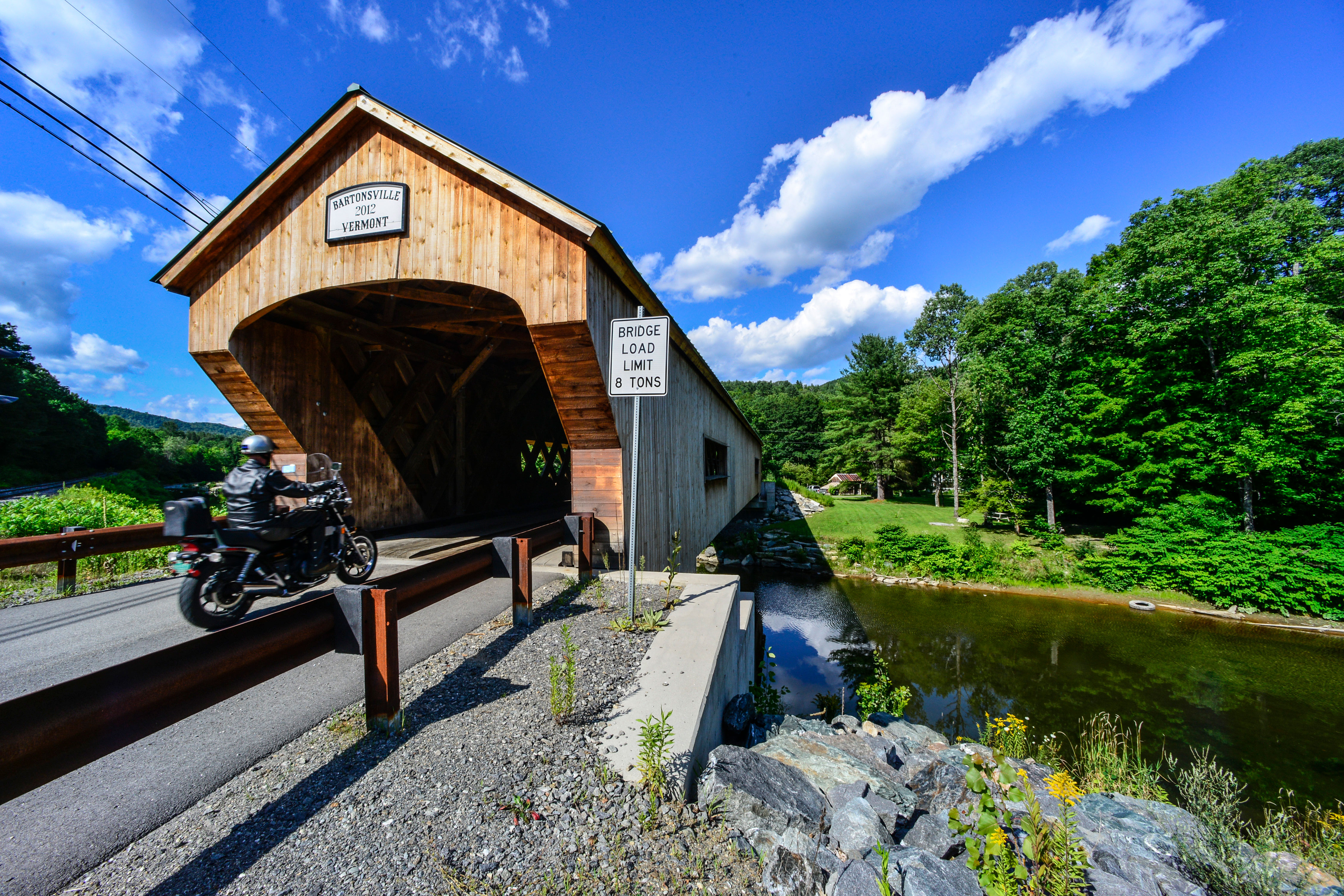
Built after the great flood of 1869, this lattice-truss style bridge has a 151-foot-span. In the 1960s, a town gravel truck fell through the bridge, cutting off the town from Vermont Route 103 until it was repaired. It was extensively restored in the 1980s, but fell victim to Hurricane Irene on Aug. 28, 2011. It was rebuilt in 2012.
Find the bridge on Lower Bartonsville Road just off of Vermont Route 103.
Scott Covered Bridge
State Forest Road, Townshend, Vt.
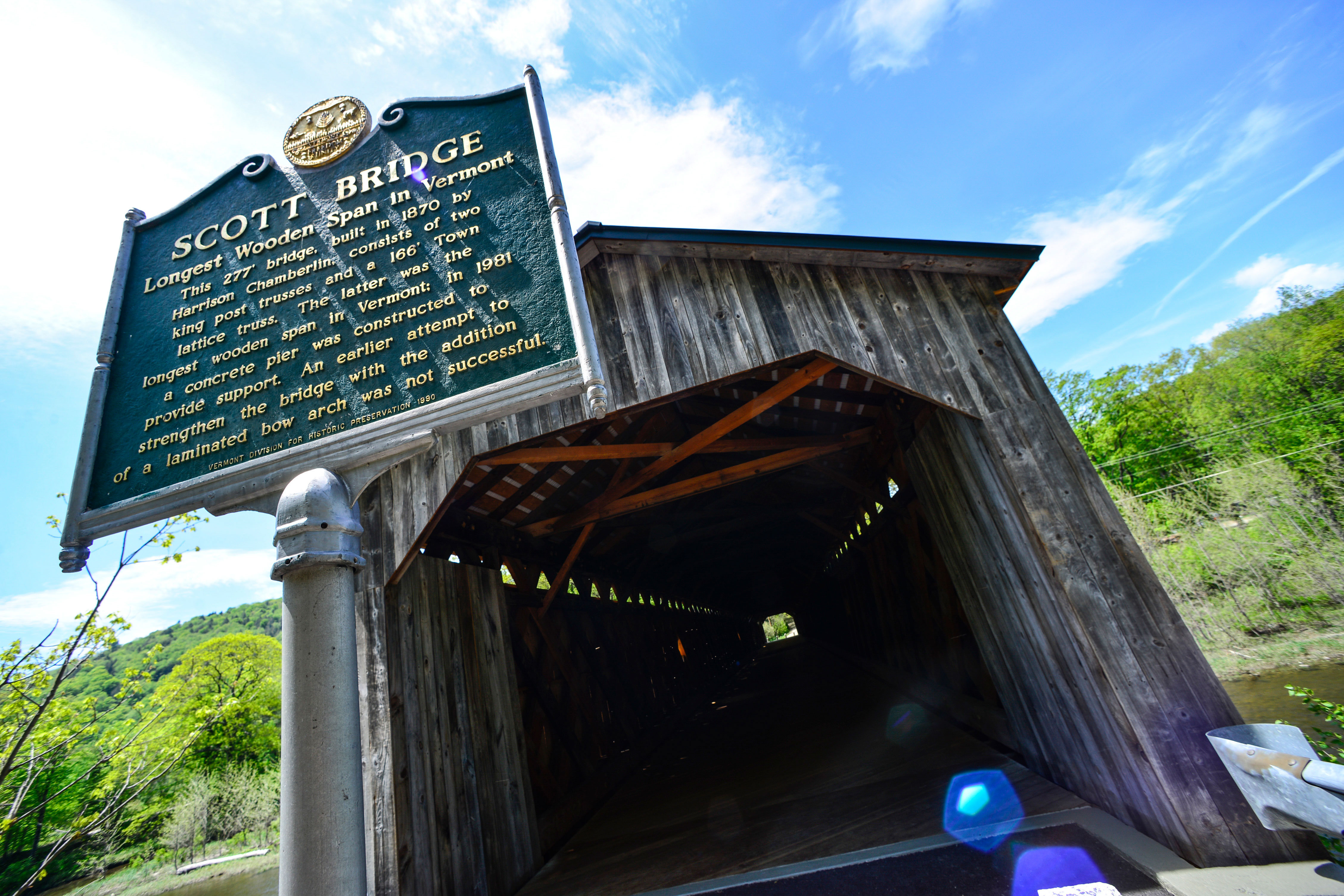
A marker near this covered bridge claims that it is the longest wooden span in Vermont, but at 277 feet it falls 3 feet short of the West Dummerston Bridge. It is closed to all traffic, but can be photographed from many angles.
Built in 1870 by Harrison Chamberlin, the bridge is a three-span structure crossing the West River. It is comprised of a town lattice truss with an arch and
two spans of kingpost trusses.
Take Vermont Route 30 east 1.6 miles from the junction with Vermont Route 35 in Townshend. The bridge is on the south side of the road.
Sources: coveredbridgesite.com, thebennington.org/covered-bridge/
